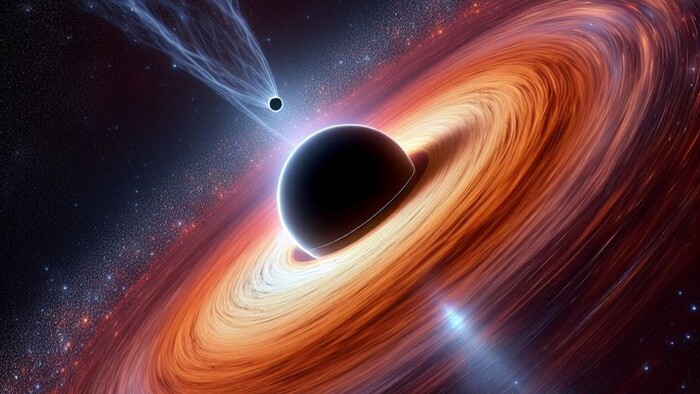Enlarge image
The Centaurus A galaxy is known for its huge jet
Photo:
Chandra X-ray Observatory Center / SAO / JPL-Caltech / NASA /
For the first time, experts have made a high-resolution picture of the center of our nearest radio galaxy Centaurus A, they report in the journal "Nature Astronomy".
With the help of the recording, they analyzed the directed plasma flow, a so-called jet, of the supermassive black hole there.
Radio galaxies are galaxies with high radiation in the radio frequency range.
Most galaxies have a black hole in their center with a mass million or even billion times the mass of our sun. The objects attract matter from their environment with their gravitational force - but not everything falls into them. Bundled by strong magnetic fields, part of the matter at the poles of a black hole shoots into space in two high-energy plasma jets at high speed.
Centaurus A 15 million light years away is one of the brightest extragalactic objects in the sky.
Michael Janssen's team from the Max Planck Institute for Radio Astronomy in Bonn has now mapped the jets in the center of the galaxy with the Event Horizon Telescope (EHT) 16 times more accurately than ever before.
What is remarkable for the researchers is that the jets only emit radio radiation at their edge, not inside.
According to the scientists, this calls into question some of the previous physical models for the matter beams.
Birth of a mighty jet
With the Event Horizon Telescope (EHT), an amalgamation of radio telescopes around the world, it has only recently become possible to take a look at the surroundings of supermassive black holes.
"This allows us for the first time to examine an extragalactic radio jet on scales that are smaller than the distance that light travels in a day," says Janssen.
"We see up close how a tremendously huge jet, starting from a supermassive black hole, is born."
Two years ago, the EHT provided an image of a supermassive black hole for the first time: The image of the center of the 53.5 million light-years distant galaxy M87 showed the so-called event horizon of the object - the limit over which matter can only fall in but not escape again .
The black hole in the center of the 13 million light-years distant galaxy Centaurus A with a mass of 55 million solar masses lies between M87 with 6.5 billion solar masses and the center of our Milky Way with four million solar masses.
"We are thus bridging the huge gap in the mass range between M87 and the galactic center," said Janssen and his team.
According to the experts, the structure of the jet in Centaurus A, except for its smaller size, corresponds very well to that in M87.
Even more: Even the matter jets of black holes that arose from stars are similar to those of supermassive black holes in galaxies such as M87 and Centaurus A. Irrespective of the mass, very similar processes seem to take place in all black holes.
"The new results show that the Event Horizon Telescope is a treasure trove for data on the rich diversity of black holes," explained Heino Falcke from Radboud University Nijmegen in the Netherlands, one of the initiators of the EHT collaboration.
jme / dpa






/cloudfront-eu-central-1.images.arcpublishing.com/prisa/DGKSYYSAUBHLZJJTPYM7TMTCWM.jpg)


